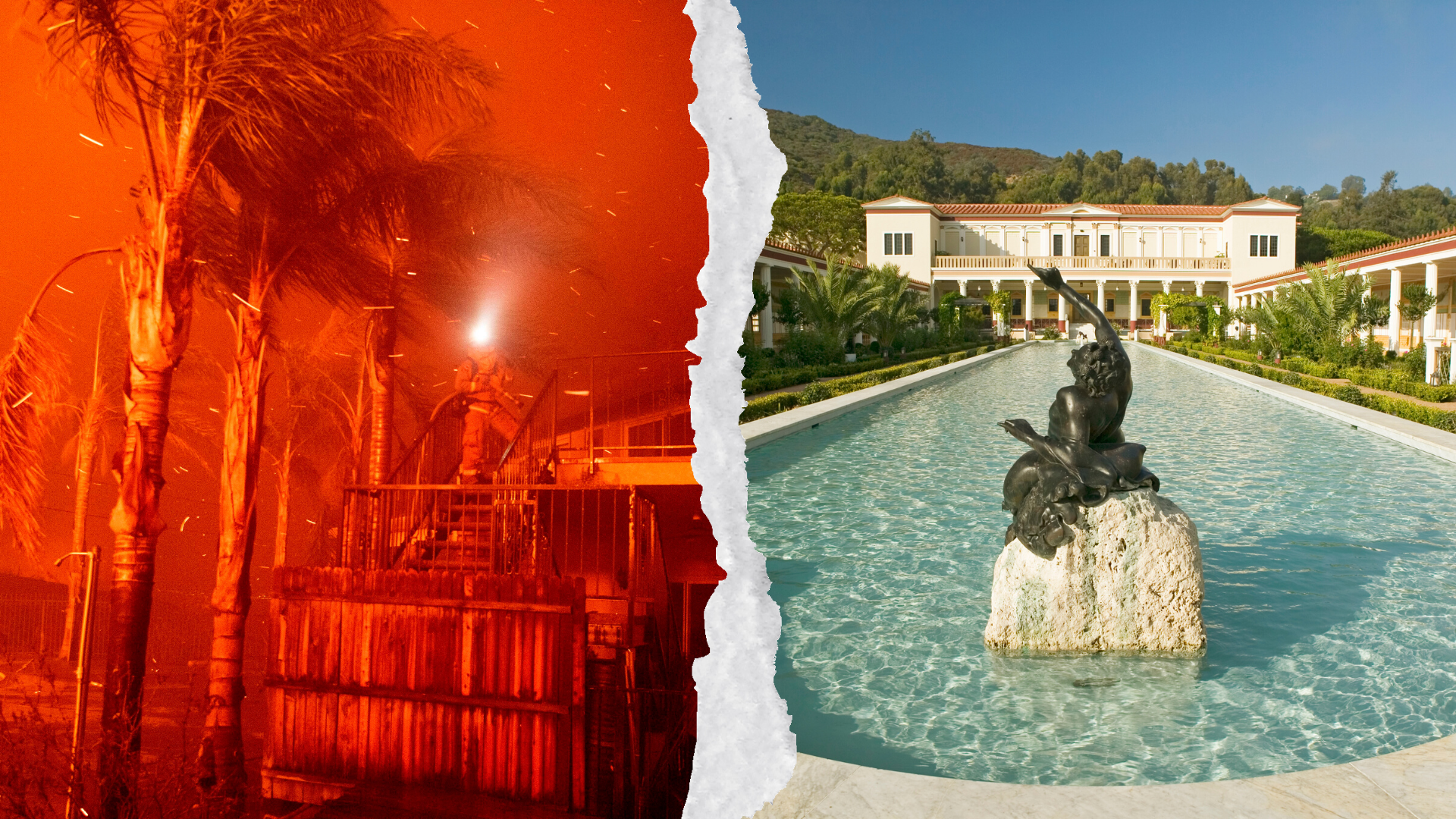Museums Are Trying to Fireproof Themselves in the Age of Climate Change

Credit to Author: Cole Kazdin| Date: Fri, 01 Nov 2019 22:03:33 +0000
As California suffers through yet another devastating fire season, flames have not just been driving people from their homes and filling the air with smoke, but threatening the state's cultural institutions. Explosive wildfires that broke out in Los Angeles this week came within a mile of the Getty Center and perilously close to the Ronald Reagan Presidential Library. When a natural disaster threatens a museum or other important institution like that, human safety is the first priority: firefighters battle the blaze, and paramedics respond to medical calls. But after that, a different kind of first responder lands on the scene. Call it EMS for art.
“It’s kind of like the ambulance getting onsite to help stabilize (art) collections that are saved for later surgery,” said Jessica Unger, emergency programs coordinator at the nonprofit Foundation for Advancement in Conservation. The group trains museum employees and a corps of traveling volunteers how to clean damaged works and how to triage: removing soot, preventing mold, stopping bleeding dyes. Objects that get wet are more likely to survive than those that are burned, but many are salvageable and can be eventually restored or repaired.
“Obviously we recognize our role in the hierarchy of a response and we always defer to those first responders who are prioritizing human life are very grateful for the work they do,” said Unger. “But we also recognize that it's essential to be able to preserve cultural heritage in these kinds of events because often these institutions hold unique, one-of-a-kind collections that tell a story about our humanity.”
Large museums typically have comprehensive emergency plans in place. The Getty Center complex was built to withstand fire, and the plazas and open spaces around buildings were designed with fire retardation in mind. It’s so well protected that even as the immediately surrounding areas evacuated and flames quickly spread towards the museum housing irreplaceable works, the museum staff didn’t flinch. They posted a detailed blog for concerned supporters, “Why the Getty Center Is the Safest Place for Art During a Fire,” and firefighters even used the Getty as a rest area, and ate at its café.
The nearby Getty Villa, a museum housing ancient Greek and Roman art and artifacts, wasn’t threatened by these latest fires, but it too has identical protections in place. The exterior is fire-resistant, there are irrigation fire suppression systems just like at the Getty Center as well as an onsite water tank for supplemental water. Brush is regularly cleared. The Villa itself is next door to a fire station.
“We train with the fire personnel regularly, and conduct annual emergency drills,” said Julie Jaskol, a spokesperson with the Getty. “The art is safest inside.”
(Some fire prevention methods are decidedly old-school: One precaution that the Ronald Reagan Library took was hiring a herd of goats earlier this year to eat the dangerously flammable brush around its perimeter.)
But many smaller museums and galleries don’t have that level of protective infrastructure, which is where outside groups come in to help. Unger leads training programs for institutions on how to prepare and prioritize what to save first in an emergency. The foundation also works with first responders, alerting them of potential hazards within a collection—for example preservation chemicals in a natural history display that may become dangerous to firefighters.
The Chicago-based Conservation Center, an organization that preserves and restores paintings, rare books and antiques, also has a 24-hour disaster response team. At a moment’s notice, they can be dispatched to the scene of natural disasters to protect and salvage works of art. Their clients include museums and private collectors. During Hurricane Sandy in 2012, they removed and “triaged,” as they call it, over 2,000 works of art, including many from Chelsea galleries. After Hurricane Katrina in 2005, they recovered more than 5,000 works of art from museums, universities and other collections, and worked to repair the damage.
Currently, the Santa Barbara Museum of Art is undergoing a massive renovation in part prompted by an impetus to improve disaster preparedness, including updating security systems, regulation of humidity control and fire prevention. “Staff are aware of the most highly valued works of art in the collection and know which to move first out of harm’s way,” said Eik Kahng, the museum’s deputy director and chief curator. (Some of their most important Greek and Roman antiquities happen to be on loan to the Getty now, where they’ll stay until renovations are complete.)
During natural disasters in the past, the museum has helped private art collectors in the area store their collections for safe keeping during evacuations. “Our staff somehow managed to pick up and safely store dozens of works of art during the Thomas Fire” two years ago, said Kahng. “We certainly hope there won’t be a repeat episode any time soon, but we always extend this courtesy to museum family and friends.”
Art evacuation and restoration work is becoming more frequent and unpredictable with climate change. Storms are often warmer and last longer than in the past, fires are more intense. “We’re increasingly aware of the risks that are out there and hopefully are providing resources to folks to be able to better prepare for these events as they’re happening with more frequency,” said Unger. “The sense of loss that accompanies a disaster event is really compounded by the sense that you’ve lost something that can’t be replaced.”
Sign up for our newsletter to get the best of VICE delivered to your inbox daily.
This article originally appeared on VICE US.